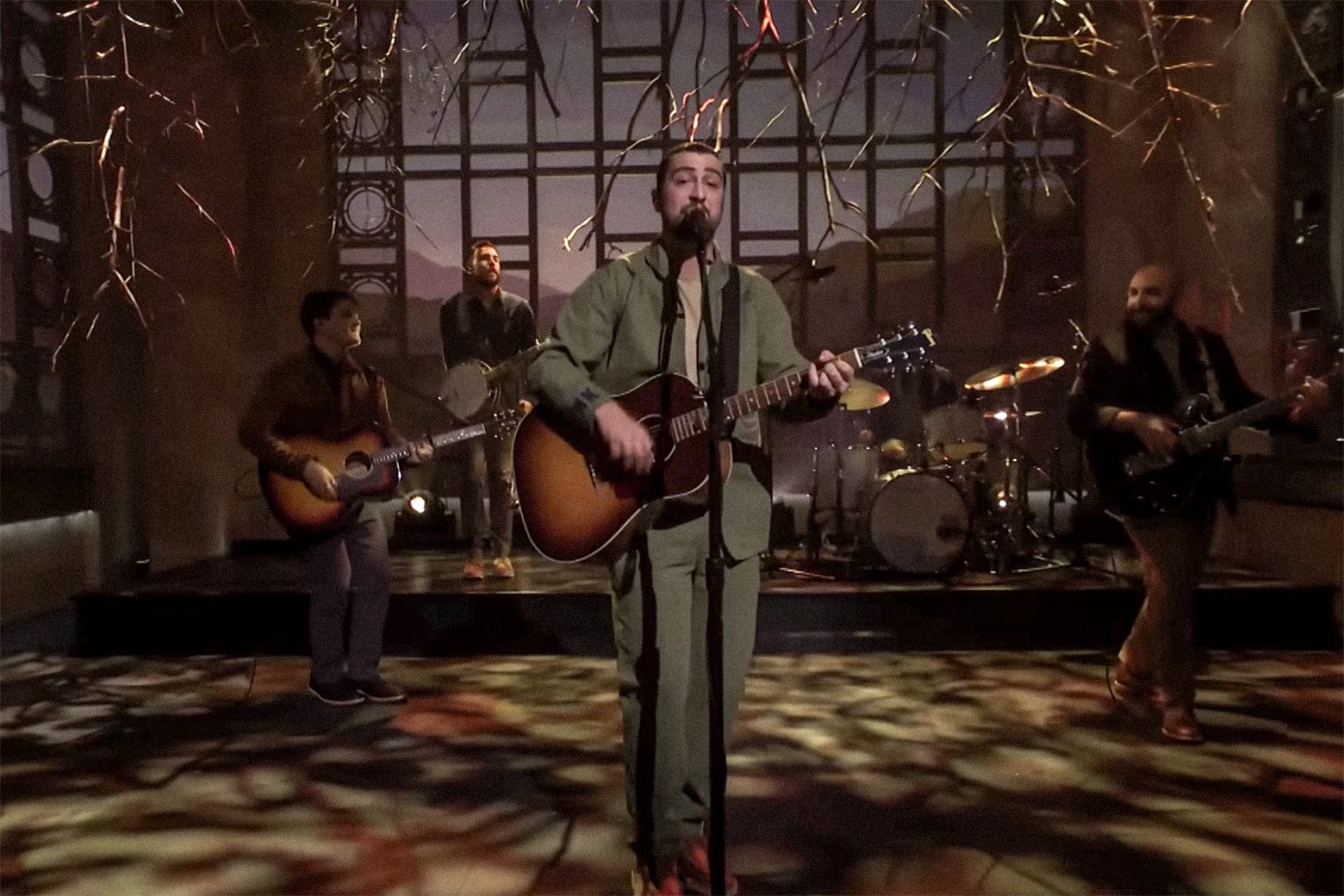
Some Trees Are Not Getting With the ‘Stick Season’ Program!
Reading Time: 3 minutesNoah Kahan’s SNL Performance Didn’t Include This Essential ‘Stick Season’ Feature, Noah Kahan’s set on SNL was beautiful, but it left out one nuance about this time of year., Stick season: Why do some deciduous leaves stay on trees in the winter?
This past weekend, New England sweetheart and singer-songwriter Noah Kahan made his Saturday Night Live debut, crooning this catchy chorus: ‘I love Vermont/ But it’s the season of the sticks.’ It was appropriate timing for the performance because, as I’m sure SNL took into consideration when choosing Kahan’s appearance date, it currently is the season of the sticks.
Stick season refers to the period between when the last leaves have fallen and the first snow covers the ground, a stretch that typically lasts from mid-October to early December—at least in Vermont, where it’s a common term. I, a Massachusetts native, had never heard of it until Kahan’s titular album, which has earned him a Grammy nomination for best new artist. But of course, in my hometown we have our own stick season, as does every place with deciduous trees.
The name evokes images of naked tree branches that snap into twigs and appear much like large sticks themselves—which Kahan illustrated on SNL by draping woody limbs above the stage. But in reality, not all deciduous trees get on board with the stick season program. And we can’t talk about stick season without acknowledging the leaves that simply refuse to fall.
If you’ve visited New England in winter, you know what I’m talking about (or if not, you’ll notice it now): those brown leaves that survive through the foliage drop, through stick season and snow, sometimes hanging on for dear life until the following spring. Some trees retain just a few loyal leaves; others boast a full canopy of dead foliage. This persistence is a phenomenon called marcescence (pronounced ‘mar-cess-ens’). Scientists have been stumped by marcescence since at least 1749, when Scandinavian explorer and botanist Pehr Kalm collected observations of the stick season rebels in North America. There is still no consensus on why it occurs.
Here’s what we do know, as researchers at Carnegie Museum of Natural History laid out in a paper published earlier this year: The most common deciduous offenders are oaks and beeches. Marcescence tends to happen in small trees or on the lower branches of large trees. You might think that windiness plays a role here—maybe some trees are just uniquely shielded from the elements, thus keeping their leaves? That doesn’t seem to be the case, though. In their study, the Carnegie Museum researchers found that similarly sized trees just a few centimeters apart showed totally different retention of dead leaves. Something must be happening within the trees themselves.
Usually trees drop their leaves as the days grow shorter and colder. The tree produces less of a chemical called auxin, and that drop in auxin contributes to a weakening of tissue at the leaf stem’s base, creating what’s known as an abscission layer. From there, the leaf can easily break off. The leaves that aren’t dropped from a tree, though, don’t develop abscission layers at all.
As to why keeping leaves would be advantageous for the trees, hypotheses abound, as that paper discusses. The leaves might offer habitat to birds, suggested Kalm back in the 1700s; the Carnegie Museum researchers figure that those droppings could provide nutrients to the tree. The leaves themselves might also release nutrients into the soil when they finally fall in the spring. Or maybe the presence of the leaf deters herbivores like deer from nibbling off the new buds hiding behind the leaf, which could explain why it’d be more useful to happen on a smaller tree or lower branch. The dead leaves might even protect those buds from frost, scientists speculate, but that hypothesis remains untested.
It’s possible that any, all, or none of these potential explanations are true. Then there’s the likelihood that there’s no adaptive function for it at all—that the trees are simply in a sort of in-between state on the spectrum of trees. Oaks and beeches are closely related to evergreen trees, which are known for a commitment to their needles year-round. So, marcescence might just be a leftover habit in species that are still evolving away from their evergreen ancestors. A Seneca legend gives the similar but more tender explanation that oaks keep their leaves out of loyalty to the evergreens.
Whatever the reason, the leaves that stay add a bit of variety to the skeleton silhouettes. As winter approaches, spare a thought for not just the sticks of the season but also the leaves that stick around.
Reference: https://slate.com/technology/2023/12/stick-season-tree-dead-leaf-noah-kahan.html
Ref: slate
MediaDownloader.net -> Free Online Video Downloader, Download Any Video From YouTube, VK, Vimeo, Twitter, Twitch, Tumblr, Tiktok, Telegram, TED, Streamable, Soundcloud, Snapchat, Share, Rumble, Reddit, PuhuTV, Pinterest, Periscope, Ok.ru, MxTakatak, Mixcloud, Mashable, LinkedIn, Likee, Kwai, Izlesene, Instagram, Imgur, IMDB, Ifunny, Gaana, Flickr, Febspot, Facebook, ESPN, Douyin, Dailymotion, Buzzfeed, BluTV, Blogger, Bitchute, Bilibili, Bandcamp, Akıllı, 9GAG